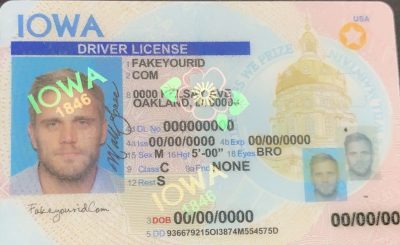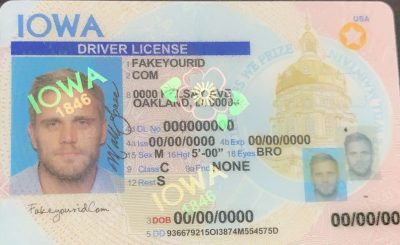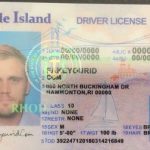Driver’s licenses are crucial identification documents that not only authorize individuals to operate motor – vehicles but also serve as proof of identity in many situations. However, the existence of fake driver’s licenses is a concerning issue, and verification services play a vital role in detecting them. Here’s how these services go about spotting fake driver’s licenses:
Physical Examination
One of the first steps in the verification process is a physical examination of the driver’s license. Verification experts closely examine the overall appearance of the license. Genuine driver’s licenses are made from high – quality materials. For example, the plastic used is of a specific thickness and texture. A fake license may be made from thinner or lower – quality plastic that feels different to the touch. The lamination on a real license is also smooth and evenly applied, while a fake one might have uneven lamination or bubbles under the surface.
The color and print quality on a real license are also distinct. The text, photos, and other printed elements on an authentic license are sharp and have consistent colors. In contrast, a fake license may have blurry text, faded colors, or irregularities in the printing process. Some fake licenses may even have misspelled words or incorrect formatting in the printed information, such as the name of the issuing authority or the expiration date format.

Security Features
Most modern driver’s licenses come with a variety of security features that are difficult to replicate. Microprinting is a common security feature found on many licenses. Tiny text or patterns are printed on the license, which are only visible under magnification. Verification services use magnifying tools to check for these microprinted elements. If they are missing or of poor quality, it could be a sign of a fake license.
Holograms are another important security feature. These are three – dimensional images embedded in the license. A genuine hologram will have a distinct and clear appearance from different angles. Fake holograms may be flat, have a poor resolution, or be in the wrong location on the license. Some licenses also have UV – sensitive features. When exposed to ultraviolet light, certain elements on the license, such as a watermark or a hidden image, will become visible. Verification services use UV lights to check for these hidden features. If they are not present or do not react as expected, it indicates that the license may be fake.
Data Verification
Verification services also check the data on the driver’s license against official databases. The license number is a key piece of information. Each driver’s license number is unique and is associated with specific data about the license holder in the issuing authority’s database. When a verification is carried out, the license number is entered into a system that checks it against the official records. If the license number does not match the records or is associated with a different person, it is a clear sign of a fake license.
The personal information on the license, such as the name, date of birth, and address, is also cross – referenced. If there are discrepancies between the information on the license and what is in the official database, it could be an indication of a fake. For example, if the name on the license is misspelled in the database or if the date of birth does not match the records, further investigation is required.
Signature Comparison
The signature on the driver’s license is an important element for verification. Most verification services have access to signature samples of the license holder, either from previous official documents or from the issuing authority’s records. The signature on the license is compared to these samples. A real signature will have consistent characteristics, such as the way the letters are formed, the pressure applied, and the overall style. If the signature on the license looks very different from the known samples, it could be a red flag. However, signature comparison requires a trained eye, as there can be some natural variations in signatures over time.
Photo Analysis
The photo on the driver’s license is carefully analyzed. Modern verification services may use facial recognition technology to check if the photo on the license matches the person presenting it. Even without advanced technology, a visual comparison can reveal a lot. The quality of the photo on a real license is usually high, with proper lighting and focus. A fake license may have a low – quality photo, or the photo may look like it has been pasted on or manipulated in some way. The facial features in the photo should also match the person presenting the license. Any significant differences in appearance, such as different hair color or facial features, could indicate a fake license.
Common Problems and Solutions
Problem 1: Poor – quality Replicas
Some fake driver’s licenses are poorly made replicas that may have obvious signs of being fake, such as incorrect colors or misspelled words. However, there are also more sophisticated replicas that are harder to detect.
Solution: Verification services need to continuously update their knowledge and training. They should be aware of the latest trends in fake license production and the techniques used to make them look more realistic. Regularly analyzing new samples of fake licenses and comparing them to genuine ones helps in developing better detection methods.
Problem 2: Database Inconsistencies
Sometimes, there may be issues with the official databases used for verification. For example, the data may be incomplete, outdated, or there could be errors in the records. This can lead to false positives or false negatives in the verification process.
Solution: Issuing authorities need to maintain accurate and up – to – date databases. Regular audits and data cleaning should be carried out to ensure the integrity of the data. Verification services should also have a process in place to handle database discrepancies, such as cross – referencing with multiple databases or contacting the issuing authority for clarification.
Problem 3: Signature Variations
As mentioned earlier, natural variations in signatures can make it difficult to accurately determine if a signature on a driver’s license is fake or not. Some people may have different signing styles in different situations or over time.
Solution: Verification services should use a combination of signature analysis techniques. In addition to visual comparison, they can use digital signature analysis tools that can measure parameters such as pressure, speed, and stroke order. Having a larger sample of known signatures over a longer period can also help in making more accurate judgments.
Problem 4: Photo Manipulation
With the advancement of photo – editing software, it has become easier to manipulate photos on driver’s licenses. A fake license may have a photo that has been digitally altered to make it look more convincing.
Solution: Verification services should use advanced photo analysis software that can detect signs of digital manipulation, such as inconsistent lighting, color gradients, or artifacts in the image. They should also be trained to look for subtle signs of manipulation, such as irregularities around the edges of the photo or in the way the photo is integrated with the rest of the license.
Problem 5: Security Feature Duplication
Some counterfeiters may attempt to duplicate the security features of real driver’s licenses. While it is difficult to replicate them exactly, they may create passable imitations.
Solution: Issuing authorities should constantly innovate and introduce new and more advanced security features. Verification services should also stay updated on these new features and be able to distinguish between genuine and counterfeit versions. Regular training on the latest security features and their detection methods is essential for verification personnel.
Fake ID Pricing
unit price: $109
| Order Quantity | Price Per Card |
|---|---|
| 2-3 | $89 |
| 4-9 | $69 |
| 10+ | $66 |



